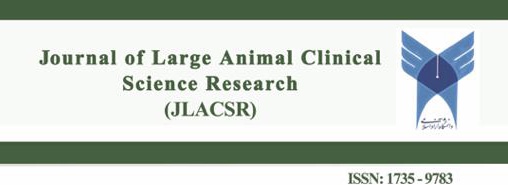Study the impairments in clinical and microscopic diagnosis of theileriosis among small ruminant population in Kurdistan province
Subject Areas : Journal of Veterinary Clinical and Laboratory Research(JLACSR)
Hamid Seifi
1
,
Meysam Moravedji
2
*
![]() ,
Saber Esmaeili
3
,
Ehsan Mostafavi
4
,
Saber Esmaeili
3
,
Ehsan Mostafavi
4
1 - Graduated of veterinary medicine, ,Sanandaj Branch, Islamic Azad University, Sanandaj, Iran
2 - Department of clinical sciences, faculty of veterinary medicine, Islamic Azad University Sanandaj branch, Iran
3 - Department of microbiology and biostatics, Pasteur Institute of Iran, Tehran , Iran
4 - Department of epidemiology and biostatics, Pasteur Institute of Iran, Tehran , Iran
Keywords: Sheep, Theileriosis, Goat, Piroplasms, Koch,
Abstract :
Background and purpose: Theileriosis is one of prevalent diseases among small ruminant population in Kurdistan province which is encountered serious problems both clinical and microscopic. The disease imposes heavy damages to the livestock industry. The aim of the study is to compare the clinical and microscopic features in sheep and goats infested with ticks, evaluation of microscopic method to identify Theileriosis and finally identification of technical impairments and finding confident approaches for diminished diagnostic errors in both methods. Material and methods: in this study, after recording the clinical findings of 250 tick infested small ruminants (230 sheep and 20 goats), blood and lymphatic smears were taken. Results: the results have shown that Piroplasms and Koch blue bodies were presented in 229 blood samples and in 238 lymphatic smears respectively. Statistical analyses declared that there was a meaningful correlation between blood and lymphatic smears and also between clinical findings such as: heart rate, conjunctiva discoloration and temperature variation with both blood and lymphatic smears. Conclusion: coordination of clinical and laboratory findings have confirmed that the main problem in clinical diagnosis of theileriosis in Kurdistan province was the involvement of animals with none-acute form of the disease (for i.e. T. ovis) in most population of small ruminants. Thus investigation of parasite both in blood smears and in lymphatic smears could lead to diminish laboratory errors.
_||_

